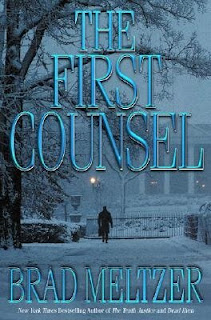 John William Barry and Neil Countryman meet in high school on opposing teams at a Seattle track meet. John William comes from old money and goes to a private school. Neil comes from a line of carpenters and goes to public school. But surprisingly, they develop an enduring friendship. Neil becomes a high school English teacher. John William withdraws from the world, ultimately becoming known as “The Hermit of the Hoh”.
John William Barry and Neil Countryman meet in high school on opposing teams at a Seattle track meet. John William comes from old money and goes to a private school. Neil comes from a line of carpenters and goes to public school. But surprisingly, they develop an enduring friendship. Neil becomes a high school English teacher. John William withdraws from the world, ultimately becoming known as “The Hermit of the Hoh”.The book is narrated by Neil and jumps back and forth between his 50 something persona and flashback with wild abandon. We’ll be reliving a college experience, and then in the next paragraph something like “my son came over with fresh bread last night”. There really seems to be no discernable plot. I’m reminded of a training program I wrote in COBOL years ago. I assumed it would be easy, but it was hard to get it going because it had absolutely no purpose besides demonstrating various table handling techniques. So where to start and where to go?
The Other deals with characters, primarily Neil and John William, but also parents, girl friends, children. There is a lot of wilderness and hiking in the book as well. The book takes place mostly in Washington, although it includes a chapter in the Italian Alps. Ringing true to me was a brief mention of a sojourn to Oregon to see Fort Clatsop and to tour the Tillamook Cheese Factory. (Both of which I’ve done.)
John William and Neil seem to prefer off trail wilderness travel with no maps. One episode involved getting lost in the North Cascades for two weeks as high school kids. What struck me as strange is that no one seemed to miss them, or launch any kind of search for them.
John William and Neil discover a special place on the South Fork of the Hoh River in Olympic National Park. It ultimately figures prominently in the book.
A few years ago I spent some brief time in both Olympic National Park and the North Cascades National Park. Both these parks are extremely inaccessible to the casual hiker. So I can really appreciate the level of outdoors expertise demonstrated by John William and Neil. And the book has intensified my desire to go back to both.
My biggest complaint about the book is the amount of casual drug use. But I suppose it is central to the characters. I found myself turning to Wikepedia to learn a little more about Gnosticism. And I also turned to the internet to see just how out of the way the Hoh River is from Seattle.
The Other is a much more literary work than my normal fare. Normally I’m into the book just for the story. But although it was easy to put the book down to take care of other chores, I could not just walk away from it. I really did want to know what happens with John William and Neil. And Guterson does ration out the information, with different characters appearing to explain different aspects of their lives.
On balance I’d say that The Other is better than what I normally read, but not as much fun.





















